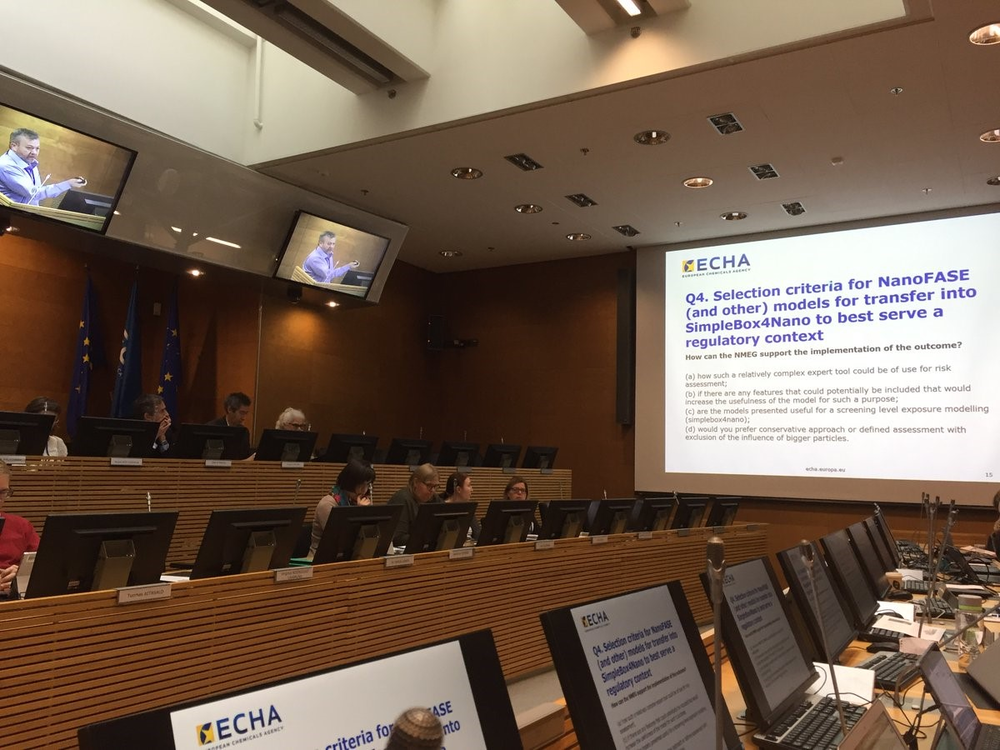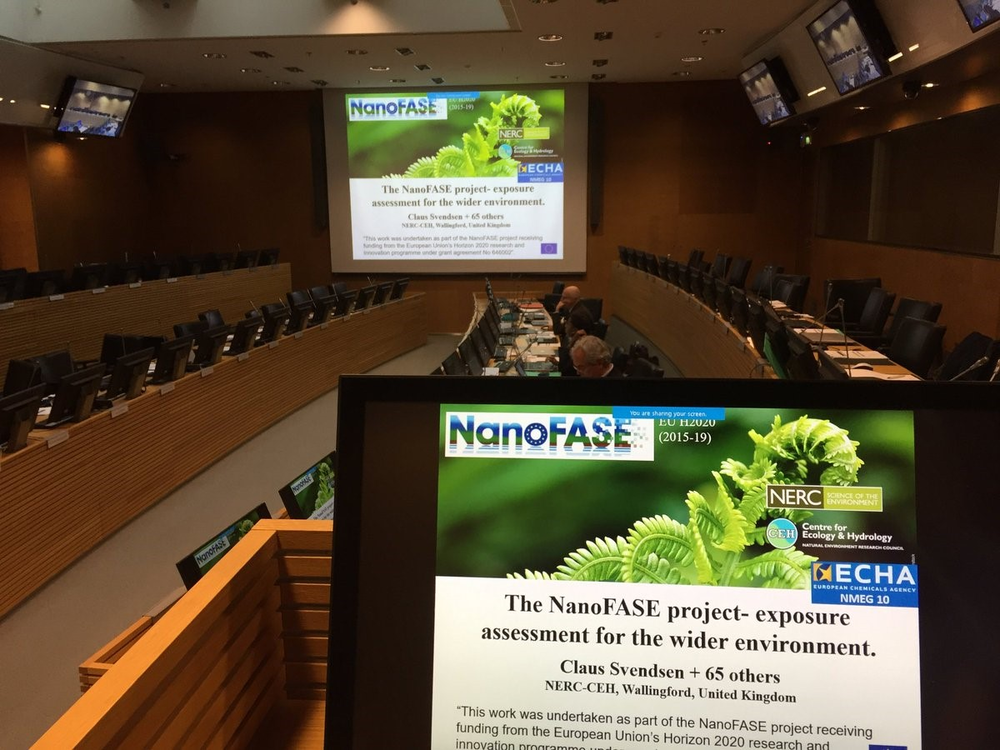NanoFASE attends ECHA Nanomaterials Expert Group to foster links on exposure modelling and REACH support
Three senior NanoFASE scientists (Claus Svendsen, coordinator; Stephen Lofts, modelling work package leader - both NERC CEH; Joris Quik, exposure modelling expert, RIVM) were asked to attend the 10th meeting of the European Chemicals Agency (ECHA) Nanomaterials Expert Group (NMEG),7-8 November 2017, in Helsinki. The NMEG is an expert group providing advice on scientific and technical issues around the implementation of EU Regulations (e.g. REACH, CLP, Biocidal Products Regulations) for nanomaterials. The group comprises experts from EU Member States, the European Commission, the European Food Safety Authority, industry associations and non-governmental organisations.
The first day of the meeting included presentations from all three NanoFASE experts on the progress of the project as a whole, the development of the NanoFASE fate, transport and biouptake models, and the development of the SimpleBox4Nano screening fate model. The second day comprised a set of breakout groups to discuss key issues. The NanoFASE experts attended a group discussing the regulatory relevance of the exposure modelling tools being developed in NanoFASE. Together with NMEG members we considered questions around (i) the aspects that exposure modelling tools should cover for regulatory exposure assessment of nanomaterials; (ii) establishing the nanomaterial fate parameters that are needed to run exposure models; (iii) how these fate parameters can be assessed using standardised measurement methods and modelling (e.g. using NanoFASE model catalogue and methods); (iv) what outputs the models need to provide for regulatory purposes; (v) how the NMEG could support the implementation for regulatory purposes of exposure tools that are currently in development.
Discussion within the breakout group ranged across a number of issues, including:
- The level of exposure model complexity, with the screening type approach of SimpleBox4Nano being sufficient for regulatory needs, while the more complex approach of the NanoFASE model exceeds these needs;
- The value of a set of well-defined, "need to know" parameters for exposure modelling, underpinned by Guidelines for their measurement, and the need to deliver a clear understanding of how precisely and accurately such parameters can be measured;
- The support lent to the generation of model parameters through the use of existing OECD Test Guidelines, and those developed and under development specifically for nanomaterials (some in the NanoFASE project);
- The prediction of environmental concentrations of different nanomaterial forms (e.g. free particles, heteroaggregated) in the environment, and how the distribution of nanomaterials among these forms influences their bioavailability;
Identifying nanomaterial processes not currently considered in SimpleBox4Nano that are priority for inclusion, such as effects of material coatings, chemical transformations, and the fate of degradation products and high aspect ratio nanomaterials.
Overall, the attending NanoFASE experts felt that the NMEG meeting was an excellent opportunity, both for disseminating our current progress within the project, and as a learning experience in how our science (not just our models!) can and should feed into the developing nanomaterials regulatory process and REACH guidelines. We view this meeting as a new and important chapter in an ongoing engagement process with ECHA that helps us to steer NanoFASE towards providing data, technical guidance on experimental approaches and exposure models that are relevant to the needs of regulators, both in the EU and beyond.


Steve Lofts summing up the feedback received by NanoFASE from ECHA Nano Materials Expert Group, Nov. 2017. (Left); Claus Svendsen’s presentation loaded up and ready to present to the ECHA Nano Materials Expert Group, Nov. 2017 (right).
